Filipino dance notation combines historical methods with modern systems to capture the nuances of traditional dances. Labanotation and Benesh are two modern systems used to notate Filipino dances.
These systems help detail steps such as *hakbang* and *inhak* in dances like *Tinikling* and *Singkil*. For example, *Tinikling* is a traditional dance that involves tapping bamboo poles on the ground and against each other, while *hakbang* refers to a specific step pattern in the dance.
Linaw-Tiwarik is a system specifically designed for Filipino dances. This system helps preserve the cultural significance of traditional dances by providing a standardized way of notating and analyzing them. By using these notation systems, performers can accurately recreate and teach traditional dances, as well as analyze their historical and cultural significance.
Understanding these notation systems is essential for appreciating the artistry and history embedded in each movement. For instance, the intricacies of *Tinikling* and *Singkil* reveal themselves through closer investigation of their notation systems.
A Rich History
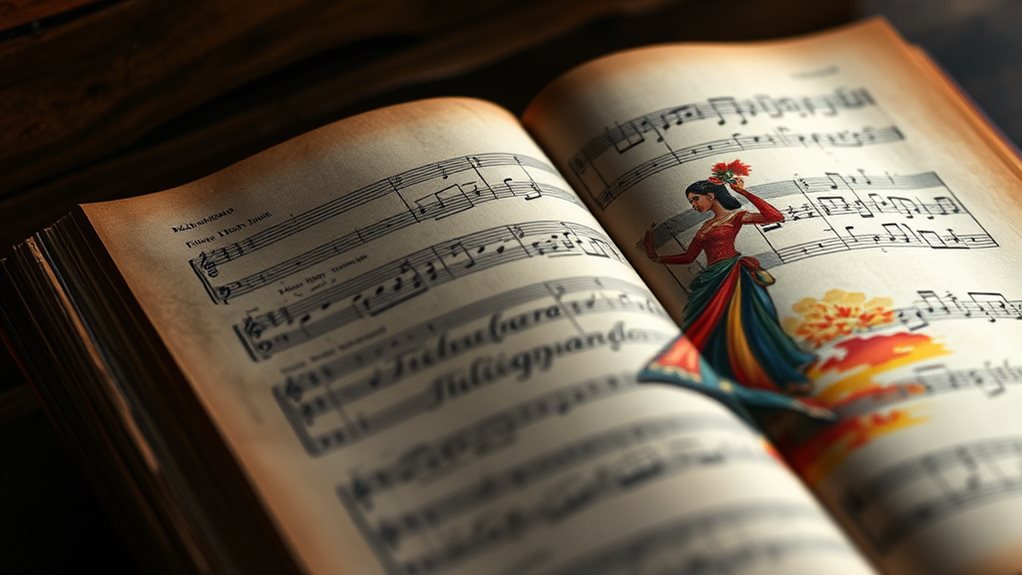
The Evolution of Filipino Dance Notation: A Historical Perspective
The evolution of Filipino dance notation was shaped by two significant factors: the pre-colonial absence of a unified system and the introduction of foreign methods during colonization.
Prior to colonization, Filipino dances weren't documented using a standardized system. The arrival of the Spanish introduced European dance forms and notation techniques, fundamentally altering the landscape of dance evolution. This cultural influence laid groundwork for future notation, primarily based on systems like the Feuillet method.
Early efforts to record Filipino folk dances relied heavily on adapting foreign systems. For example, Pierre Beauchamp's system, primarily for Baroque dance, and Stepanov's anatomical notation were influential.
The American colonial period saw further adaptation, often combining movement descriptions with Western musical notation. Aligning steps with the music's timing facilitated the documentation and teaching of traditional dances.
The Bayanihan Philippine National Folk Dance Company played a vital role in this dance evolution. Their efforts to document and preserve traditional dances, supported by Republic Act 8628, helped establish a more standardized approach.
Educational institutions and cultural organizations contributed to the preservation and transmission of cultural influences in dance. National Artists like Leonor Orosa Goquingco significantly aided in cataloging ethnic dance traditions.
Modern technology has enhanced the process of documenting and analyzing Filipino dances. Digital notation offers new avenues for the meticulous study and analysis of traditional dances, ensuring their preservation for future generations.
Popular Filipino Dances
The Philippines is home to a diverse array of traditional dances that reflect the country's rich cultural heritage. Filipino dances are deeply rooted in the country's history and regional variations.
In Luzon, several iconic dances can be found. The Tinikling is a notable dance that involves bamboo poles****. Dancers expertly maneuver their feet between the fast-moving poles.
Pandanggo sa Ilaw is another well-known dance where dancers balance oil lamps on their heads and hands. This dance showcases the dancers' balance and coordination.
The Visayas region is also home to many traditional dances. The Itik-Itik is a popular dance that mimics the movements of a duck. Dancers use their arms and legs to simulate the movements of a duck.
The Pantomina, or "Dance of the Doves," simulates bird courtship and is a showcase of the dancers' agility and flexibility.
In Mindanao, dances with strong cultural influences can be found. The Singkil is a dance that involves bamboo poles and is inspired by the Ramayana and Darangen epics. Dancers use their feet to tap out a rhythm on the bamboo poles.
The Kappa Malong-Malong is a dance with strong Muslim influence and showcases the versatility of the malong garment.
Each dance in the Philippines has its unique cultural significance and regional variation. Understanding these dances requires appreciating their regional differences and the stories they convey.
Essential Dance Steps
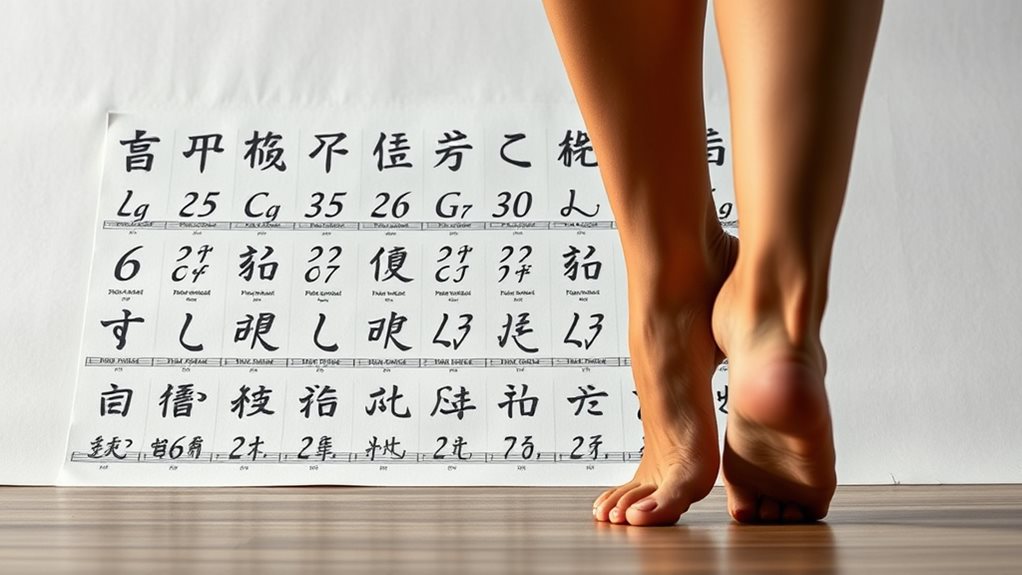
Mastering Fundamental Dance Steps is Crucial for Filipino Dance Mastery
A dancer's understanding of fundamental steps is essential for mastering Filipino dances. These foundational techniques form the basis of more complex movements. Precision in execution is paramount, as slight variations can drastically alter the dance's meaning and aesthetic.
Three Essential Footwork Techniques
Three essential footwork techniques are the building blocks for various Filipino dance styles: *hakbang* (step), *inhak* (slide), and *talon* (jump). Each step requires attention to weight transfer, foot placement, and fluid movement.
| Step | Description | Variation |
|---|---|---|
| *Hakbang* | A simple step, forward or sideways. | Weight transfer is critical. |
| *Inhak* | A sliding step, smooth and controlled. | Speed and direction control the movement. |
| *Talong* | A jump, light and graceful. | Height and landing techniques are essential. |
Refining Technique through Practice
Understanding the nuances of each step is where you'll refine your technique. Repetition reinforces muscle memory and improves flow. Practice incorporating these essential steps into your routine to improve your overall performance.
Cultural Significance and Expression
These essential steps aren't mere technical exercises; they're the foundation upon which you'll build emotion and expression. Each step carries cultural significance and embodies Filipino artistry. Your commitment to precise execution contributes to a meaningful performance.
Musical Accompaniments
Understanding Musical Accompaniments in Filipino Dance****
Mastering Filipino dance requires a deep understanding of its diverse and vibrant musical accompaniments. These accompaniments are an integral part of the dance and are as varied as the dances themselves.
Diverse Musical Instruments****
Filipino dances feature a wide range of musical instruments, including the rondalla's guitar-like strings in dances such as Sakuting, and the resonant gongs of the gangsa in dances like the Kalinga's Banga.
Moro dances utilize the agong and kulintang, with intricate rhythmic patterns that reflect the dancers' complex hand and arm movements. Drums provide lively beats for dances like Burung Talo, while the unexpected sound of drinking glasses (baso) accompanies the Binasuan.
Influences on Musical Styles
The musical styles in Filipino dances reflect diverse influences, blending Chinese and Spanish backgrounds with indigenous traditions****.
For example, in Sakuting, you'll notice staccato inflections and rhythmic tapping, which reflect the dance's indigenous roots. The music itself can be upbeat and happy, driving the cheerful nature of Sakuting, or fast-paced, as in Sayaw sa Bangko.
Integral to Choreography
The music in Filipino dances isn't just background; it's integral to the choreography.
In Sakuting, stick tapping accompanies mock fights and singing, guiding marching and shuffle steps, even influencing the theatrical combat dance steps and ballet-like movements.
Similarly, the rhythmic patterns in dances like Singkil dictate the precise timing of fan and hand movements. Understanding these intricate relationships between movement and music is key to authentic performance.
Traditional Costumes
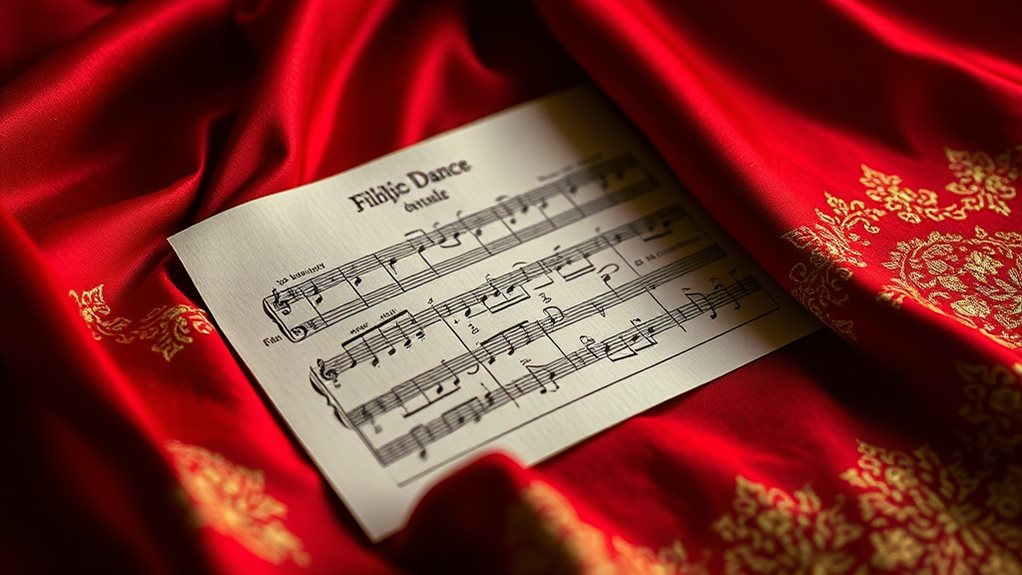
Filipino dance costumes are an integral part of the performance, enhancing the storytelling and aesthetic impact of each dance.
These vibrant expressions of cultural heritage reflect the archipelago's diverse regions and cultures. Each costume tells a story, often linked to historical events or regional traditions. For instance, the national dress of Filipinas, the baro't saya, showcases 400 years of history influenced by Spanish colonization. Its variations, like the Maria Clara dress, further enrich the visual landscape.
Men traditionally wear the Barong Tagalog, often made from natural fabrics like piña.
Filipino dance costumes feature diverse use of natural fabrics and regional designs. The use of natural fabrics like banana, jusi, and pineapple is common in many costumes. Regional dances, such as the Tinikling, showcase unique costume designs.
The Singkil and Pangalay dances from Mindanao feature elaborate headpieces and metallic accessories. Indigenous costumes, such as those from the Kalinga and T'boli tribes, incorporate woven fabrics and natural materials.
Group performances often highlight the festive nature of the dance through coordinated, vibrant costumes. Understanding these diverse costumes is key to appreciating the depth and breadth of Filipino dance.
Labanotation and Benesh
Preserving Filipino Dance: The Importance of Notation Systems****
Recording choreography is crucial for preserving Filipino dances for future generations. Two systems, Labanotation and Benesh Movement Notation, are valuable tools for this purpose.
Labanotation, developed by Rudolf von Laban in the 1920s, uses graphic symbols to record movement from the dancer's perspective. This system effectively captures the nuances of Filipino folk dances, such as the sadiow's swaying hips and stamping feet.
For example, Labanotation symbols can document the kuddol's knee bends and integrate the social meanings embedded within these movements.
Benesh Movement Notation, developed by Rudolf and Joan Benesh in 1956, offers a different approach. This system uses a unique written script to represent the entire body in a vertical column, detailing body part positions and movements.
Although lacking readily available Filipino dance examples, Benesh's approach allows for highly accurate reconstruction of complex sequences.
For instance, Benesh's detailed script can depict the intricate footwork, jumps, and hand movements defining specific steps.
Both systems have distinct advantages. Labanotation is useful for documenting the nuances of Filipino folk dances, while Benesh Movement Notation provides a more detailed approach for complex sequences.
Historical Notation Systems
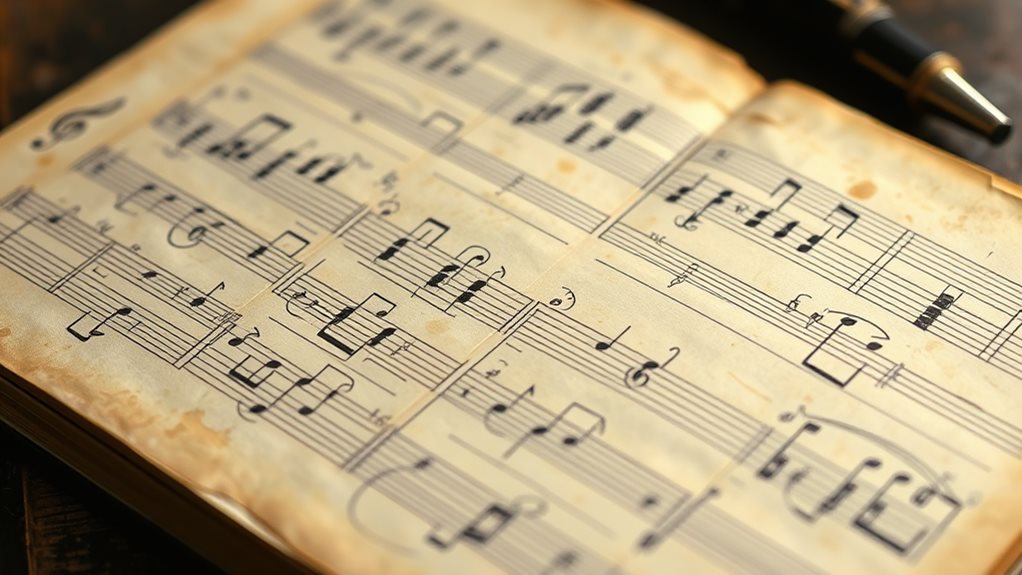
Historical Notation Systems Paved the Way for Modern Dance Notation.
Before the development of Labanotation and Benesh, several systems emerged to record dance choreography. Each system reflected the technical demands and aesthetic values of its time. Understanding these historical systems provides valuable context for appreciating modern notation.
Early Systems Faced Notation Challenges.
Pierre Beauchamp's system, published by Raoul Auger Feuillet in 1700, was an early attempt to document Baroque dances. However, it faced significant notation challenges.
Vladimir Ivanovich Stepanov's system, developed in 1892, proved crucial for preserving the Imperial Russian Ballet's repertoire, including Petipa's masterpieces.
Historical Comparisons Reveal the Evolution of Notation.
Comparing historical systems reveals the evolution of notation, from simple depictions to more complex systems.
For example:
- Beauchamp-Feuillet's system focused on floor patterns, limiting three-dimensional movement representation.
- Stepanov's system, while detailed, required specialized training to understand.
- Other systems, like Saint-Léon's *La Sténochorégraphie*, showcased the diversity of methods.
Specialized Notations Emerged Across Dance Genres.
The development of systems like those by Schillinger and Kahn highlighted the need for specialized notations across dance genres.
Nationally specific systems, such as Vasilescu's (Romanian) and U Chang-sop's (Korean) notations, also emerged.
Historical Efforts Laid the Groundwork for Future Developments.
Despite limitations, these historical efforts laid the groundwork for future developments.
They highlight the ongoing quest to accurately capture the dynamism and intricacies of dance in a written form, a process fraught with its own unique set of notation challenges.
Modern Notation Efforts
Modern dance notation has undergone significant advancements. The integration of digital innovations has revolutionized how dance is recorded and shared. One example of this is the use of computerized notation systems, such as the DOM system, which first offered an animated representation of dance on early computers. This foundation has been built upon by modern software, allowing for effortless creation, editing, and global dissemination of dance notations.
These advancements have greatly improved the preservation of choreographic works**. The integration of motion capture technology** has increased precision in dance notation. Additionally, modern software facilitates the global dissemination of dance notations, ensuring that countless choreographic works are preserved.
Cultural adaptations have also played a crucial role in modern notation efforts. For instance, the Benesh system, originally developed for ballet, has been successfully adapted for Turkish folk dances. This demonstrates the versatility of notation systems and highlights the importance of adapting to specific styles.
Examples of this include the Chamo system for Korean dance and the Tango Notation, which demonstrate a responsiveness to diverse cultural needs.
The influence of international styles promotes a global exchange of knowledge. Notation systems tailored to specific styles acknowledge unique cultural expressions and promote cross-cultural understanding.
Effective notation must account for the nuances of individual dance traditions. These modern efforts significantly improve the accuracy and accessibility of dance notation, enriching the field and ensuring the preservation of dance heritage worldwide.
The Bayanihan's Role
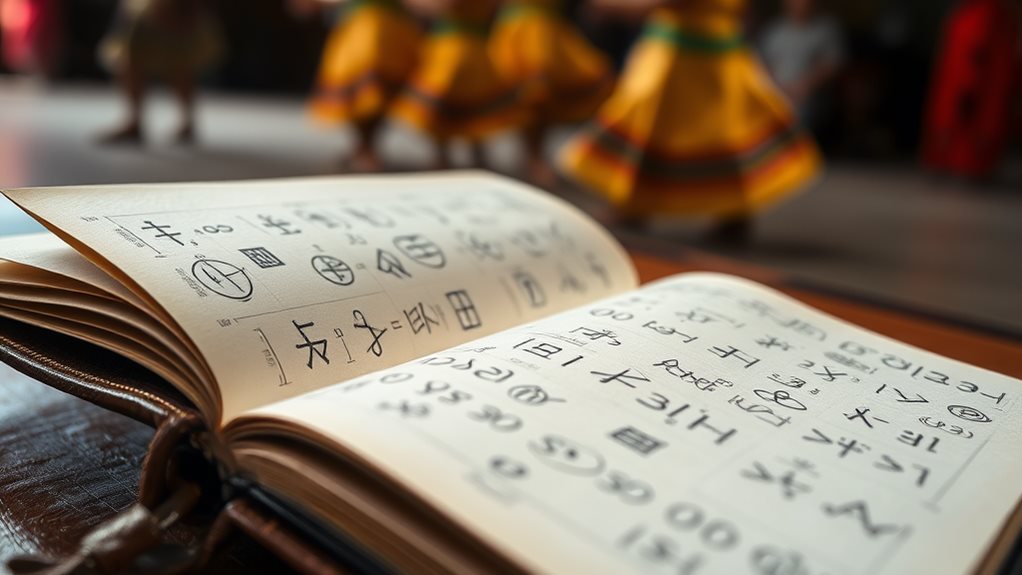
Bayanihan's Preservation of Filipino Folk Dances****
The Bayanihan, Philippine National Folk Dance Company, plays a vital role in preserving and promoting Filipino folk dances as a performer, educator, and innovator. Their extensive repertoire showcases the nation's diverse regional styles, solidifying the Bayanihan legacy. As cultural ambassadors, they introduce international audiences to Filipino artistry.
Authenticity in Performances
Bayanihan's commitment to authenticity is evident in every performance. They painstakingly recreate traditional steps, music, and costumes, ensuring accurate representation of each dance's cultural context. For example, their performances of traditional dances like Tinikling and Cariñosa showcase vibrant energy and skilled execution.
The rich sounds of traditional instruments like the gangsa and kulintang accompany each movement, creating captivating storytelling experiences.
Education and Legacy
Bayanihan educates performers and the public through workshops and training, ensuring the continuation of these dances and passing down intricate movements to new generations. Their dedication is crucial in sustaining the legacy of these dances.
By attending their performances, spectators experience the history and cultural significance behind each dance, enriching their understanding and appreciation.
Documentation and Legacy
Despite facing challenges due to the lack of a standardized notation system, Bayanihan's commitment to documentation remains a cornerstone of their mission. Their work ensures the continuation of this invaluable artistic heritage for years to come, leaving an enduring Bayanihan legacy.
By preserving cultural traditions and passing them down to future generations, Bayanihan solidifies its role as a guardian of Filipino folk dances.
Preserving Authenticity
Preserving the authenticity of Filipino folk dances is crucial for cultural preservation**. This requires meticulous attention to detail and accurate representation of the dances. Documenting these dances** using various methods, such as Aquinotation, Benesh, or Labanotation, helps preserve their authenticity.
Accurate notation is essential for capturing the nuances of each dance. Notation should include the spirit, feeling, and essence of the movement, in addition to recording exact steps and rhythms. This requires collaboration with local communities, cultural experts, and master dancers, who possess invaluable knowledge passed down through generations.
Involving local communities and experts in the documentation process ensures that the dances are represented accurately. Their input helps capture the symbolism and significance of the dances, which reflect ancestral lives and social structures.
Teaching and preservation efforts in educational settings, such as Bachelor of Physical Education programs, play a vital role in promoting and preserving these dances. Physical education teachers can use notated manuscripts and videos to ensure accurate transmission to future generations****. Community-based organizations also contribute to the preservation of these dances through performances and cultural events.
Effective documentation methods include video recording with careful camera angles and editing to avoid misinterpretations. Transcription of steps and music, accompanied by detailed descriptions of style, quality, and timing, is also crucial.
By using a combination of these methods, the authenticity of Filipino folk dances can be preserved for future generations.
Notation's Importance
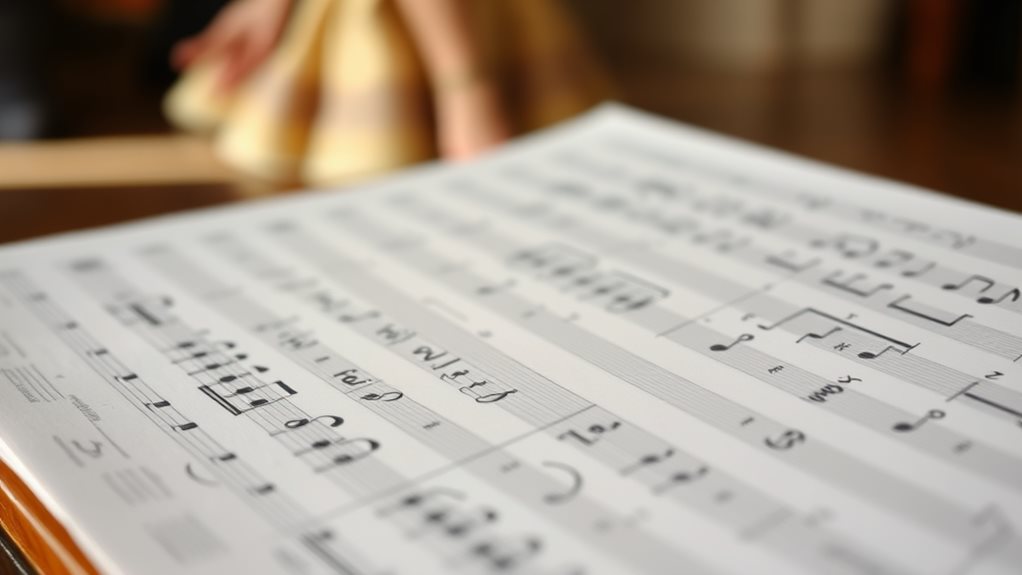
Dance notation is crucial in preserving the authenticity of Filipino folk dances. This is because notation systems provide a detailed record of steps, rhythms, and stylistic nuances, allowing for accurate recreation and performance. The evolution of notation systems specifically for Filipino dances reflects a growing understanding and appreciation of their complexity.
Notation serves as a powerful educational tool. It facilitates the learning and teaching of complex movements, enabling dancers to analyze specific dance styles and appreciate the historical context of each dance. Notation also standardizes instruction across different environments and facilitates comparison of various dance forms.
For example, the Linaw-Tiwarik notation system, developed by Francisca Reyes Aquino, is a notable example of a system specifically designed for Filipino dances. This system allows for a detailed record of steps and rhythms, enabling accurate recreation and performance.
The importance of notation extends to cultural transmission and preservation. It ensures that vibrant traditions aren't lost to time by providing a permanent record of historical choreography. By studying notation, individuals can actively participate in the ongoing dialogue surrounding Filipino dance and its place in the nation's cultural identity.
For instance, the Bayanihan Philippine Dance Company has used notation to preserve and promote Filipino folk dances, allowing these traditions to be transmitted across generations.
Key benefits of notation in Filipino folk dances include:
- Improved learning and teaching of complex movements.
- Detailed analysis of specific dance styles.
- A deeper appreciation for the historical context of each dance.
- Standardization of instruction across different environments.
- Facilitated comparison of various dance forms.
Questions and Answers
How Can I Learn Filipino Dance Notation?
Filipino dance notation can be learned through observation, practice, and understanding its cultural significance. To master notation techniques, you will need to dedicate time to studying the dance's history and techniques.
Start by observing Filipino dance performances and noting the movements and patterns. For example, Tinikling, a traditional Filipino dance, involves intricate footwork and rhythmic movements that can be broken down and notated.
Practice is essential to mastering Filipino dance notation. As you learn the dance movements, focus on understanding the cultural context and significance behind each dance. This will help you appreciate the nuances of the notation system.
Immersion in Filipino culture and dance history is also crucial. Study the history of Filipino dance and its various forms, such as folk, modern, and contemporary. This will help you understand the evolution of dance notation and its significance in Filipino culture.
Pursue additional resources and training to further develop your skills in Filipino dance notation. This may include taking dance classes, attending workshops, or working with experienced dance instructors.
Are There Online Resources for Notation?
Online resources for notation provide detailed information on its history and cultural significance. These resources can be found in digital archives. Digital archives offer insights into traditional notations and their evolution over time. For instance, they may include historical records of Filipino dance notations, which have been used to document and preserve traditional dances.
What Software Helps With Dance Notation?
Software options for dance notation include KineScribe, Benesh software, and DOM.
When choosing a dance notation software, consider the unique strengths of each system. KineScribe is a digital tool that uses symbols and diagrams to record and analyze movement. Benesh software, on the other hand, utilizes a specific notation system that emphasizes the spatial relationships between body parts. DOM, or Dance Open Movement, is a more flexible system that allows users to create their own notation symbols and syntax.
The best software for dance notation depends on your specific needs and goals.
Which Notation System Is Best for Filipino Dances?
There is no single "best" notation system for Filipino dances.
The complexity of Filipino dance movements and their rich cultural significance make it challenging to find a suitable notation system. To effectively capture the nuances of these dances, it may be necessary to adapt existing systems or create a new one.
For example, the Labanotation system, widely used for recording Western dance movements, may not be sufficient for documenting the intricate footwork and hand gestures found in traditional Filipino dances like Tinikling or Karatong. A notation system tailored to these specific dance styles would be more effective in conveying the intricate movements and rhythms.
Adapting existing systems or creating a new one can help capture nuanced movements accurately.
Where Can I Find Notated Filipino Dances?
Notated Filipino dances can be found in various resources. Academic databases such as JSTOR and Google Scholar provide scholarly articles and research papers on Filipino dance. These databases often include notated dance steps and choreographies.
Cultural centers and institutions like the Philippine Cultural Center and the National Commission for Culture and the Arts (NCCA) also offer notated Filipino dances. These centers usually have archives and libraries with dance notations, scores, and choreographies.
Online archives such as the International Dance Council (CID) and the Dance Heritage Coalition also provide access to notated Filipino dances. These websites often feature digital collections of dance notations, scores, and videos.
Community groups and dance companies, such as the Bayanihan Philippine National Folk Dance Company, also offer notated Filipino dances. These groups often share their dance notations and choreographies through workshops, performances, and online platforms.